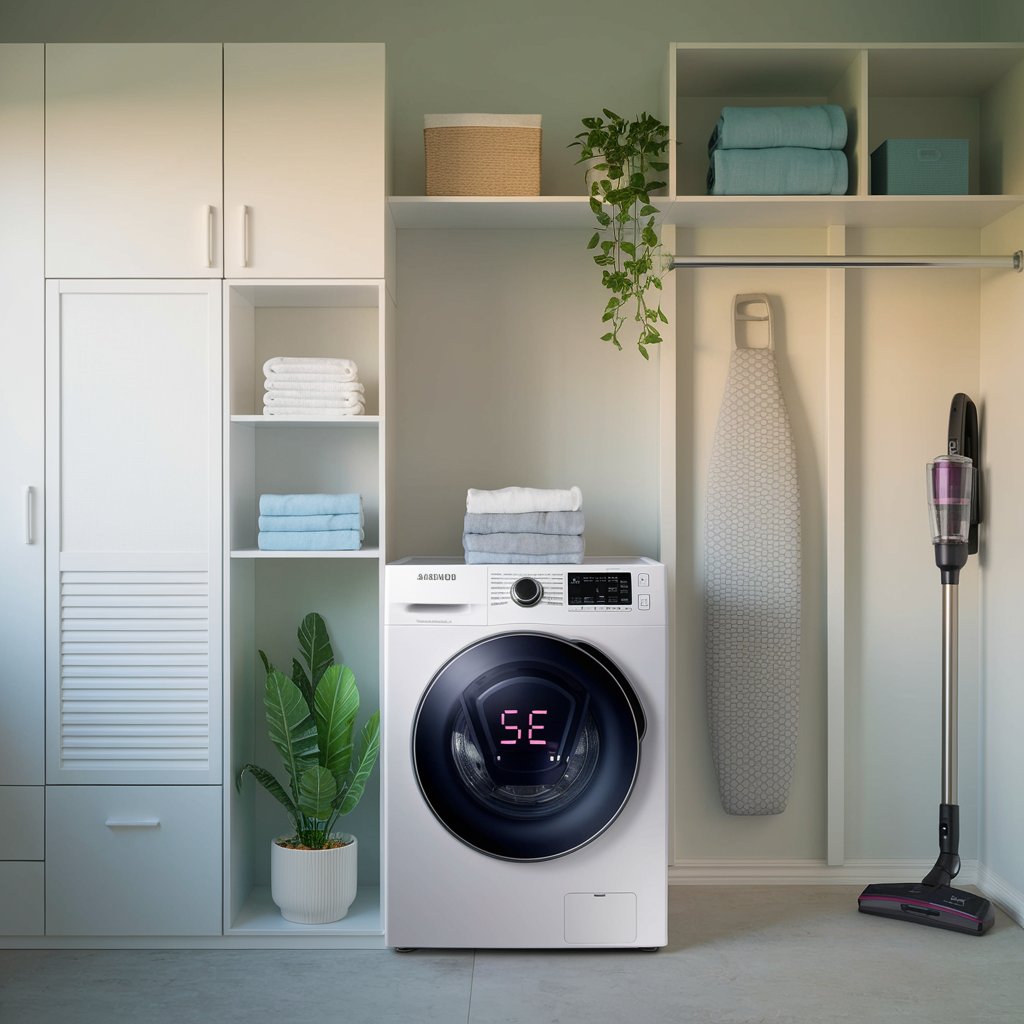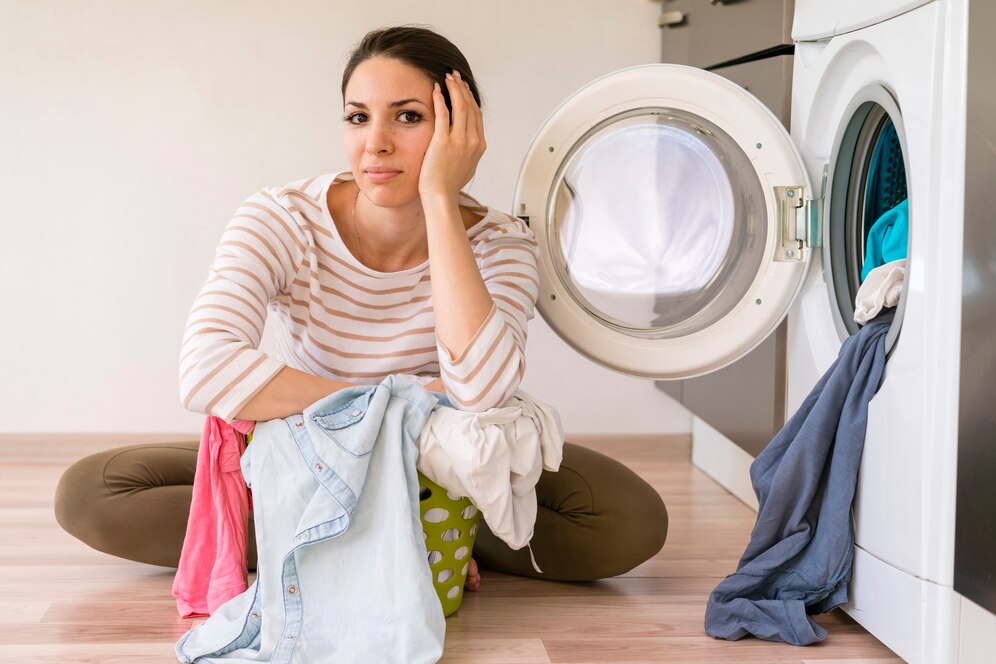

You’re halfway through laundry day when your washing machine suddenly flashes a UE error. Frustration builds as your clothes sit soaked, and you wonder what went wrong. This common issue not only disrupts your routine but could also signal deeper problems with your appliance. Don’t worry—by the end of this guide, you’ll have the know-how to fix the UE error and prevent it from happening again.
The UE error, displayed as “UE” or “uE” on your washing machine’s screen, stands for “Uneven Load” or “Unbalanced Error.” This indicates that the machine has detected an imbalance in the drum during the spin cycle. Modern washing machines use sensors to monitor the weight distribution inside the drum. When an imbalance is detected, the machine stops spinning and displays the UE error to alert you.
Different brands may display this error differently. For example, LG shows “UE” or “uE,” Samsung may display “Ub” or “UE,” and Whirlpool often uses “uL” for “Unbalanced Load.” Understanding this error is the first step toward resolving it and getting your laundry back on track.
Several factors can lead to the UE error in your washing machine. Identifying the root cause helps you apply the correct fix. Uneven or heavy loads, such as towels and bedding, can create an imbalance. Washing a single heavy item or a load with mixed weights can cause the drum to spin unevenly.
Incorrect machine placement is another common cause. Your washing machine must sit on a level surface; even a slight incline can affect performance. Worn-out suspension springs or shock absorbers can also trigger the UE error. Over time, these components wear out, reducing the machine’s ability to stabilize the drum. Lastly, motor or sensor issues can cause the machine to incorrectly identify an unbalanced load, often requiring professional intervention.
Now that we’ve identified common causes, let’s dive into step-by-step troubleshooting methods for both top-loading and front-loading washing machines.
Step 1: Pause the cycle and redistribute the load evenly. Open the lid and manually rearrange the clothes around the agitator. Clumped clothes can create weight imbalances.
Step 2: Check for tangled items. Untangle any items like bedsheets or long garments that may have wrapped around others. Tangled clothes can cause uneven weight distribution.
Step 3: Verify the machine is on a flat surface. Use a spirit level to ensure the washing machine is perfectly level. An uneven floor can contribute to imbalance issues.
Step 4: Test the machine without a load. Run a spin cycle without any clothes. If the UE error still appears, the problem may be with the machine’s hardware.
Step 1: Pause and redistribute heavy items. Stop the machine and rearrange heavy items like coats or blankets. Heavy items can stick to one side of the drum.
Step 2: Inspect the drum for obstructions. Check for any foreign objects lodged between the drum and the tub. Obstructions can impede the drum’s movement.
Step 3: Clean the filter for debris. Locate and clean the washing machine’s filter. A clogged filter can affect drainage and balance.
Step 4: Run a diagnostic test. If your machine has this feature, run a self-diagnostic test following the manufacturer’s instructions. This can identify specific error codes related to hardware issues.
Ensure there is no overloading or underloading. Adjust the load size to match the machine’s capacity, as too few or too many items can cause imbalance. Inspect suspension rods or springs for damage. Examine these components for signs of wear; damaged parts need replacement to restore balance. Test motor balance by consulting the manual. An unbalanced motor may require professional repair.
Sometimes, the UE error persists despite your best efforts. It’s time to bring in an expert if the error continues after all troubleshooting steps. Unusual sounds during operation, like loud noises or excessive vibrations, may indicate mechanical issues. Visible drum misalignment suggests internal damage. Additional error codes appearing during a diagnostic test also signal it’s time for professional help.
Costs and time involved vary. Motor replacement can cost between $200 to $400, while suspension repair typically ranges from $150 to $300. Service fees may apply for professional assessments. Always get a quote before proceeding with repairs to weigh the cost against purchasing a new machine.
Prevention is better than cure. Here are some expert tips to help you avoid encountering the UE error again. Load your washer properly by mixing heavy and light items to balance the load. Even distribution prevents imbalance. Regular maintenance is crucial; clean the filter monthly and inspect suspension parts periodically. This ensures optimal performance.
Install your washer correctly by placing it on a flat, stable surface and using adjustable feet if necessary. Proper installation reduces vibration and imbalance. Use manufacturer-recommended settings by selecting the correct spin cycles and load types as per the manual. Appropriate settings minimize stress on the machine.
While both errors relate to imbalance, UE generally indicates an unbalanced load that the machine can’t fix automatically, whereas UB often refers to an unbalanced load that the machine is attempting to correct by adjusting spin speeds.
It’s not advisable to continue using the machine without addressing the error. Ignoring it can lead to further damage, including wear on the motor and suspension system.
While detergents don’t directly affect load balance, using high-efficiency (HE) detergents can improve washing performance. Laundry balls or balance rings can help distribute weight more evenly.
Dealing with the UE error in your washing machine can be frustrating, but it’s often a fixable issue. By understanding what causes this error and following the step-by-step troubleshooting methods outlined above, you can get your machine back in working order. Remember, proper care and maintenance not only prevent errors but also extend the life of your washing machine. If you found this guide helpful, bookmark it or share it with others who might be facing the same issue.
Empower yourself with these solutions and take control of your laundry day once again!
